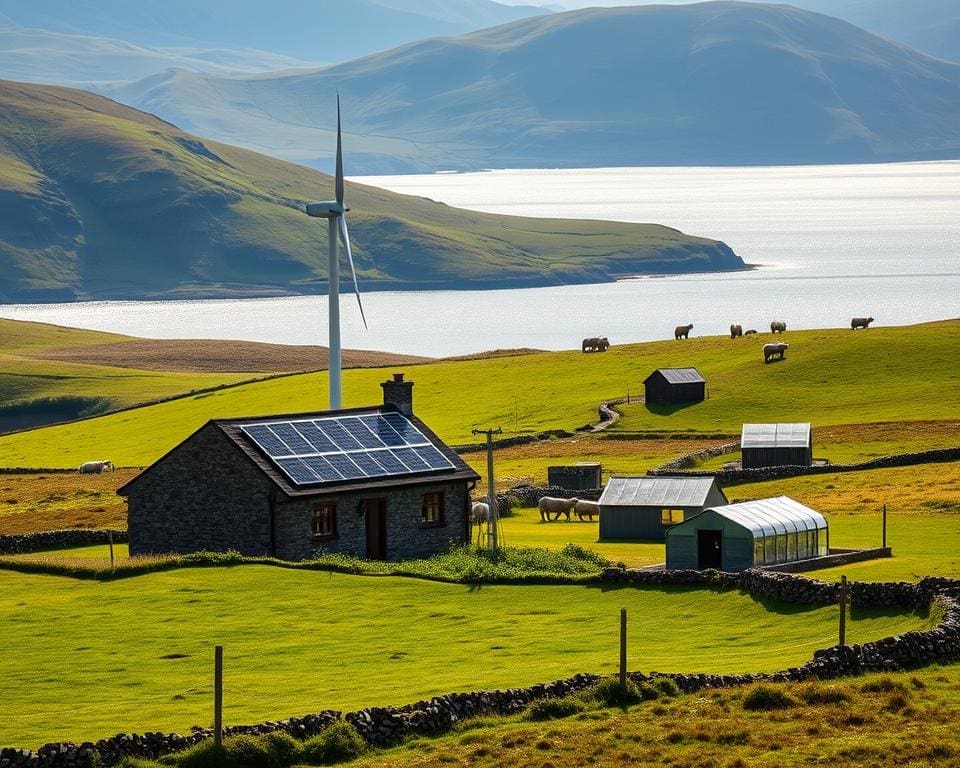Living sustainably in a Scottish croft offers a unique opportunity to blend traditional practices with modern eco-friendly lifestyle choices. By embracing renewable practices, individuals can significantly reduce their carbon footprints while cultivating a deeper connection with the natural surroundings. Sustainable living in this rural landscape not only conserves resources but also promotes biodiversity through organic gardening and responsible land stewardship. This harmonious balance between heritage and innovation paves the way for a sustainable future, encouraging us to honour the land we inhabit while making choices that benefit both ourselves and the environment.
Embracing Renewable Energy Sources
Integrating renewable energy sources into a Scottish croft can transform how energy needs are met while promoting sustainability. The effectiveness of solar power, wind energy, and hydropower offers a range of sustainable energy solutions suitable for the unique landscape of Scotland.
Solar Power Integration
Solar power has witnessed significant advancements in technology, leading to the development of efficient solar panels that can perform well even in the often cloudy Scottish climate. Installing solar panels not only reduces reliance on fossil fuels but also provides considerable savings on energy bills. Various grant options are available to assist crofters in adopting this sustainable energy solution, incentivising the transition towards cleaner energy.
Wind Energy Options
Wind energy presents an excellent opportunity for those living in remote areas. Small wind turbines can be installed on crofts, making use of Scotland’s natural wind resources. Site assessment is crucial in determining the best locations for installation while ensuring compliance with local regulations. The benefits of generating your own clean energy through wind systems can significantly enhance the sustainability of any croft.
Utilising Hydropower
For crofters with access to flowing water, utilising hydropower can provide a reliable energy source. Micro-hydro systems allow for the harnessing of local water resources to generate electricity, thus enabling a self-sufficient energy solution. These systems not only contribute to the sustainability of the environment but also create a stable energy supply that can complement other renewable energy sources.

Setting Up an Organic Garden
Creating an organic garden not only provides fresh produce but also fosters a sustainable lifestyle that benefits both health and the environment. When establishing such a garden in Scotland’s unique climate, careful consideration of crops, pest management, and soil health becomes essential.
Choosing the Right Crops for Your Climate
Selecting crops adapted to Scotland’s weather will yield the best results. Focus on cultivating varieties that thrive in cooler temperatures and shorter growing seasons. Suitable options include:
- Potatoes
- Brassicas, such as kale and cabbage
- Leeks and onions
- Root vegetables, like carrots and beetroots
By rotating these crops from season to season, you can maintain healthy soil while minimising pests and diseases.
Natural Pest Control Methods
Employing natural pest control techniques is crucial for organic gardening. Consider implementing companion planting, where certain crops enhance each other’s growth while deterring pests. Introducing beneficial insects, such as ladybirds and lacewings, can provide natural pest control as well. Observing your garden ecosystem allows for timely interventions, reducing reliance on harmful chemicals.
Composting Techniques for Nutrient-Rich Soil
Composting transforms kitchen scraps and garden waste into nutrient-rich soil. To create an effective compost bin, layer green materials—like grass clippings—with brown materials—such as dried leaves. Allow the compost to aerate and break down over time. The resulting nutrient-rich soil can significantly boost your garden’s productivity, fostering healthier plants and vibrant crops.
How can you live sustainably in a Scottish croft?
Living sustainably in a Scottish croft requires embracing a multitude of sustainable practices in crofting. This approach not only supports personal well-being but also contributes positively to the environment and local community. The principles of an eco-friendly lifestyle serve as a foundation for daily activities, encouraging crofters to use renewable resources, grow their own food, and minimise waste.
In the context of rural living, engaging with fellow crofters fosters a strong sense of community. Such community engagement can lead to shared knowledge and resources, making it easier to adopt sustainable methods. By participating in local initiatives, people can amplify their efforts and collectively address ecological concerns. This may involve joining environmental groups that promote biodiversity, waste reduction, and educational programmes that enhance awareness around sustainable practices.
Adopting an eco-friendly lifestyle requires innovation and dedication. Through collaboration and support from the community, the journey towards a sustainable future becomes not only achievable but also rewarding. Crofters are encouraged to share their successes and challenges, nurturing a culture of sustainability that evolves and strengthens over time.
Water Conservation Strategies
Implementing effective water conservation strategies is essential for sustainable living in a Scottish croft. Adopting eco-friendly practices can significantly reduce water usage while preserving this vital resource. Two of the most effective methods include rainwater harvesting and greywater recycling, both of which offer practical solutions for everyday water management.
Rainwater Harvesting Systems
Setting up rainwater harvesting systems involves collecting rainwater from roofs and directing it into storage tanks or barrels. This process ensures that crofters can utilise this free resource for irrigation and other non-potable uses. The benefits of rainwater harvesting are numerous, including reduced water bills and lower dependency on mains water supply. Not only does it support water conservation, but it also provides a sustainable solution to watering gardens and livestock.
Greywater Recycling
Greywater recycling refers to the practice of reusing water from baths, sinks, and washing machines for irrigation and flushing toilets. This approach significantly reduces freshwater consumption and promotes efficient water management. It’s crucial to comply with health guidelines when implementing greywater recycling systems to ensure the safety of reused water. By integrating this method into daily life, crofters can minimise their environmental impact while contributing to overall water conservation efforts.
Community and Local Resources
Living sustainably in a Scottish croft is not merely an individual effort; it thrives on the strength of the local community. Engaging with neighbours fosters a spirit of cooperation that encourages the sharing of tools, seeds, and invaluable knowledge. Such cooperative initiatives not only build lasting friendships but also create an enriching environment where everyone benefits from each other’s experiences and resources.
Local markets serve as vibrant hubs for exchanging fresh produce and artisanal crafts, reinforcing bonds within the community while promoting sustainable living. By supporting these markets, residents can access organic food options and contribute to the local economy, significantly reducing their carbon footprints. Educational workshops, often hosted by local NGOs, provide opportunities for residents to learn eco-friendly practices, strengthening their commitment to a sustainable lifestyle.
Connecting to various support networks is crucial for enhancing the sustainability journey in a crofting lifestyle. These networks often organise community events that celebrate local culture and biodiversity, encouraging individuals to participate actively in their environment. Engaging with available resources can motivate others to adopt similar practices, creating a ripple effect that amplifies the impact of sustainable living throughout the region.









